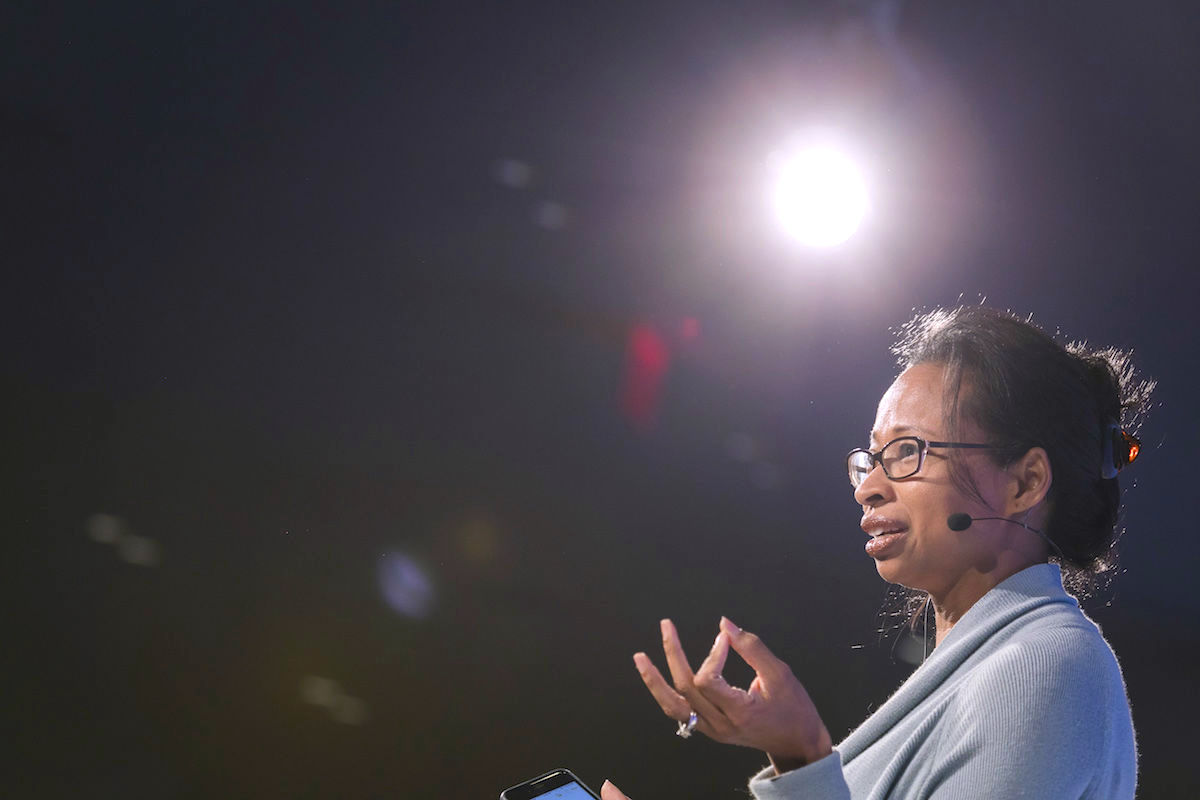Dalila Wilson-Scott’s parents met during the Vietnam War; her dad was in the Air Force and her mom was a local Vietnamese woman who didn’t have much more than an elementary education. “When I think of the broader work of inclusion and opportunity, that’s my parents’ own story,” says Wilson-Scott. “A focus on economic opportunity and diverse perspectives is just something I grew up with.”
Today, Wilson-Scott brings the passion for equality and diversity from her upbringing to her roles as the senior vice president of community investment for Comcast NBCUniversal and the president of the Comcast Foundation.
In the third installment of our series 10 Leaders on Business for Good, NationSwell founder and CEO Greg Behrman chats with Wilson-Scott about her social-impact work and the changing nature of corporate civic engagement.
Is there a moment in your career where your background allowed you to understand the merits of equity and inclusion in a way that others couldn’t?
I wouldn’t say there was one defining moment, but I remember being in a meeting once and a woman said, “I’ve never met anyone who grew up poor.” I was like, “Well, I guess technically if you looked at income data, you could argue I fit into that demographic.” I mean, how do you know if you grew up with somebody who was poor or not? Her perception was that no one in that meeting could have grown up poor; otherwise, how would we have ended up in the same place? It helps to realize that people have a tendency to form those kinds of assumptions.
What are some things that set Comcast NBCUniversal apart in the way they address corporate citizenship and social impact?
As a recent example, I’d say how we came together so quickly after some pretty astronomical hurricanes in a short amount of time. During Harvey and Irma, we really showed up, from opening our Wi-Fi network so that emergency workers and everyone else — whether they were a Comcast customer or not — could be as connected as possible. We leveraged our presence through our TV stations around the country to help drive donations to the American Red Cross. We even launched new technology on our X1 platform, where people could say into their voice remotes “Hurricane Harvey” or “Irma” and make an immediate donation toward relief and recovery.
What do you think are the ingredients to success for corporate social responsibility programs?
Authenticity is so important. Wherever a company chooses to focus its efforts, it’s got to feel true to its brand. Imagine if we at Comcast — a technology and media company — were to suddenly say, “Oh, now we’re going to tackle health issues.” That’s probably not a space where we can have as much impact as companies that are thinking about global health every day. Sure, we could maybe have an effect from a delivery standpoint — for example, how technology can make delivery of resources better — but that would come off as inauthentic and probably not sustainable. And those two things are key.
How are CSR efforts different than they’ve been in the past?
It was more common in the past for social-enterprises to be criticized as not being the best for business, and I think that’s definitely changed. At minimum, companies need to have a purpose and define it in a way that every customer and employee can get behind. Before, it was enough to say, “We’re going to make the best product in the world, and we’re going to make a lot of money from it.” That’s not acceptable anymore to message it in that way. The standards are higher, and more companies are aspiring to deliver their product or service in a way that is purpose-driven but still profitable and focused on delivering results for both communities and company stakeholders.
What drives you? What’s your North Star?
For sure, my children. But I’ve also been fortunate to find my voice and use it to challenge assumptions and the status quo. If I’m going to do that and take that kind of risk, I want it to be for the greater good. There are so many people I’ve met — and I’ve been one of those people in the past — who don’t have the ability to have their voice represented at so many different tables. While I’m not at every single table, I know that I’m more fortunate than a lot of people. The amount of inequity in society frustrates me, especially how it’s just an assumed state for most people. All of us should be able to find our ability to impact that, and I’ve been fortunate to make that my life’s work.
Dalila Wilson-Scott is a NationSwell Council member.







